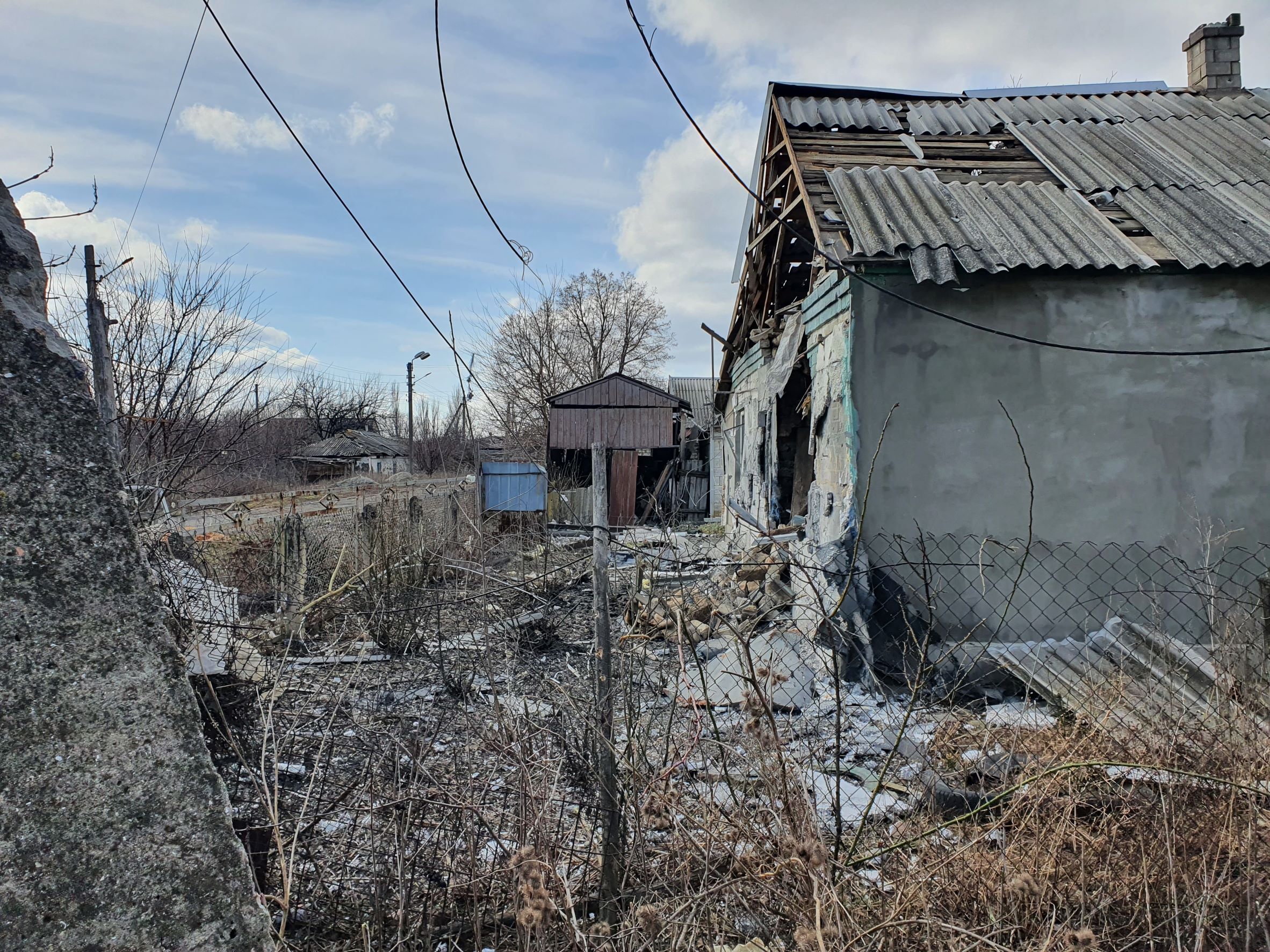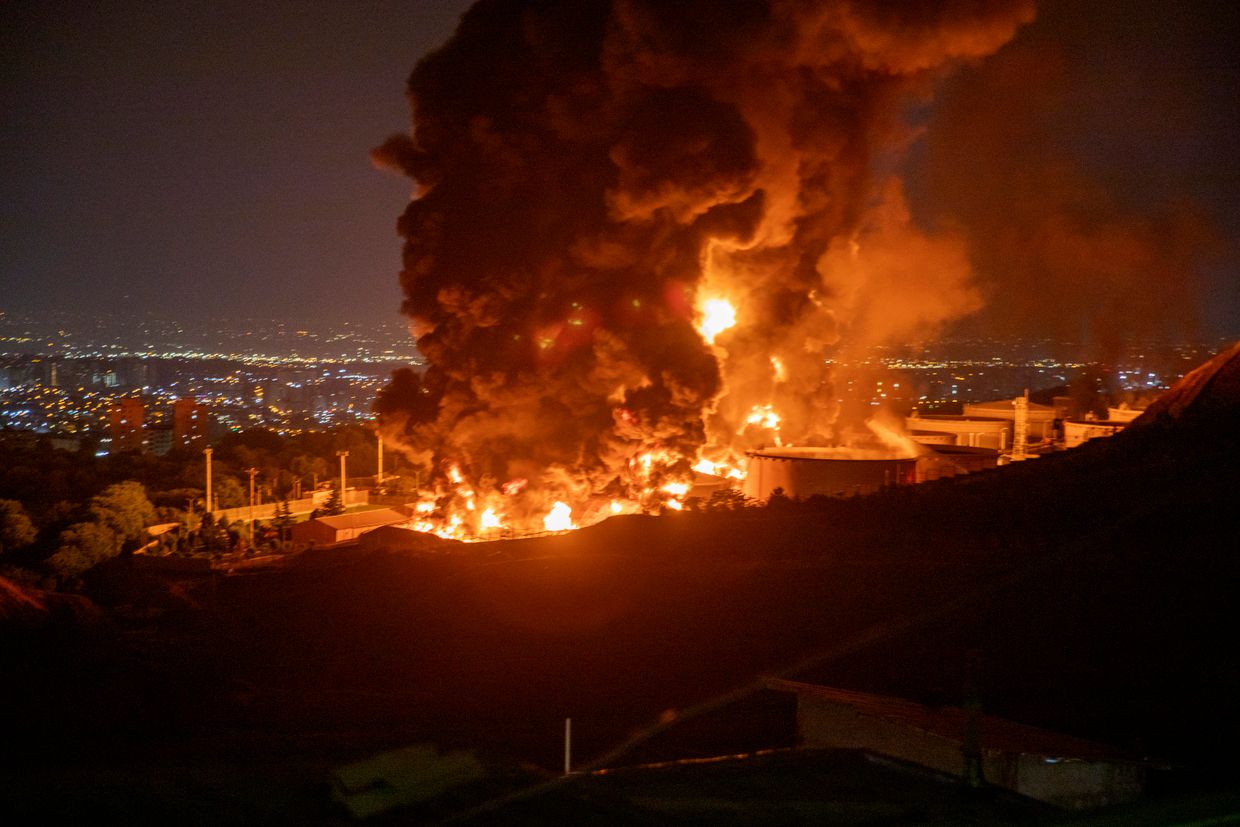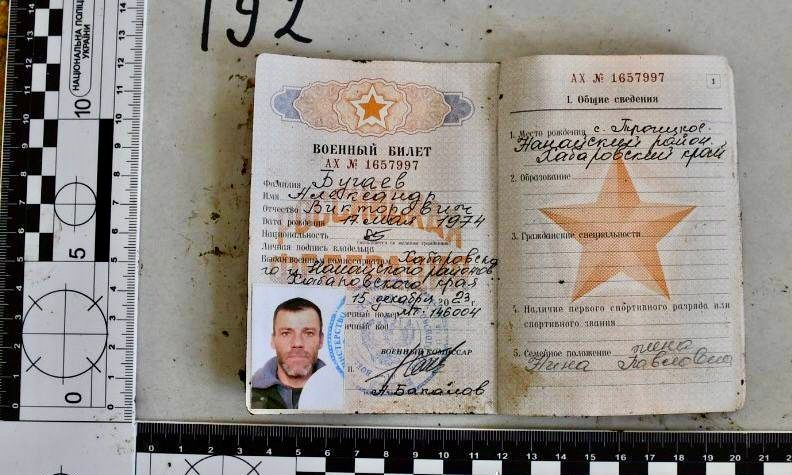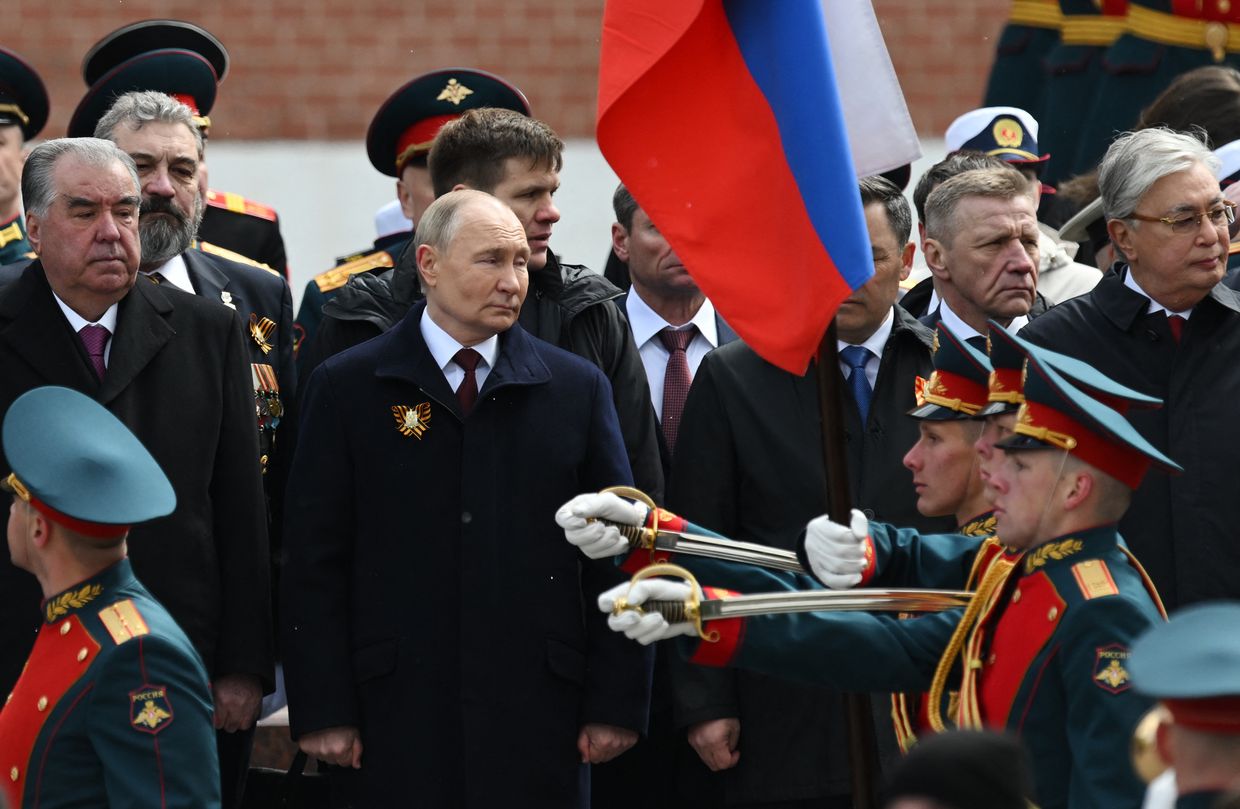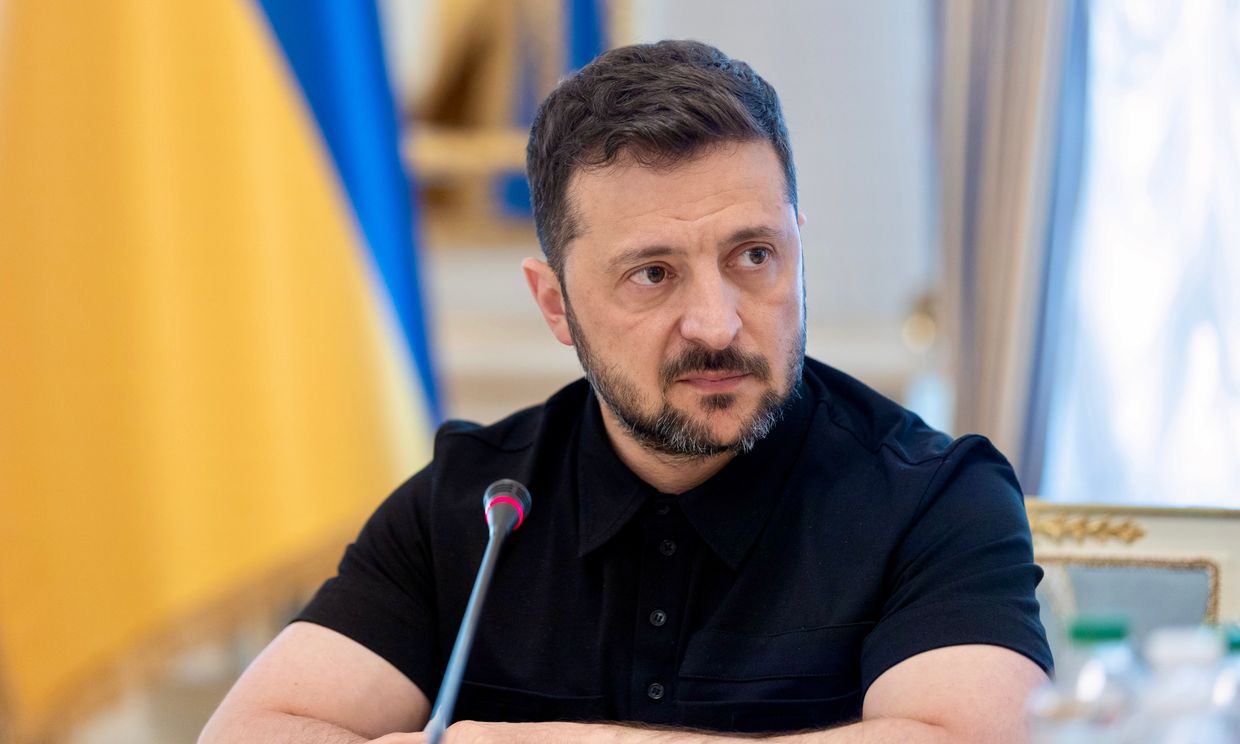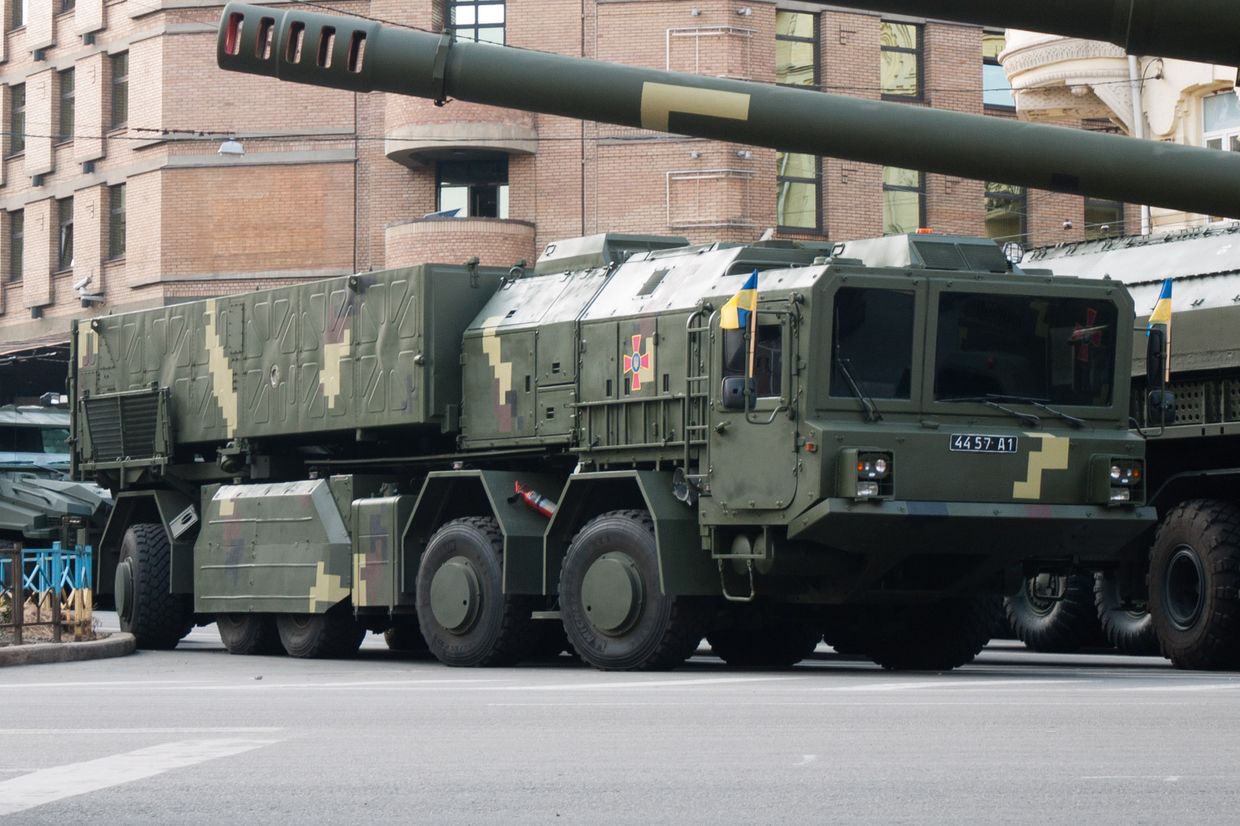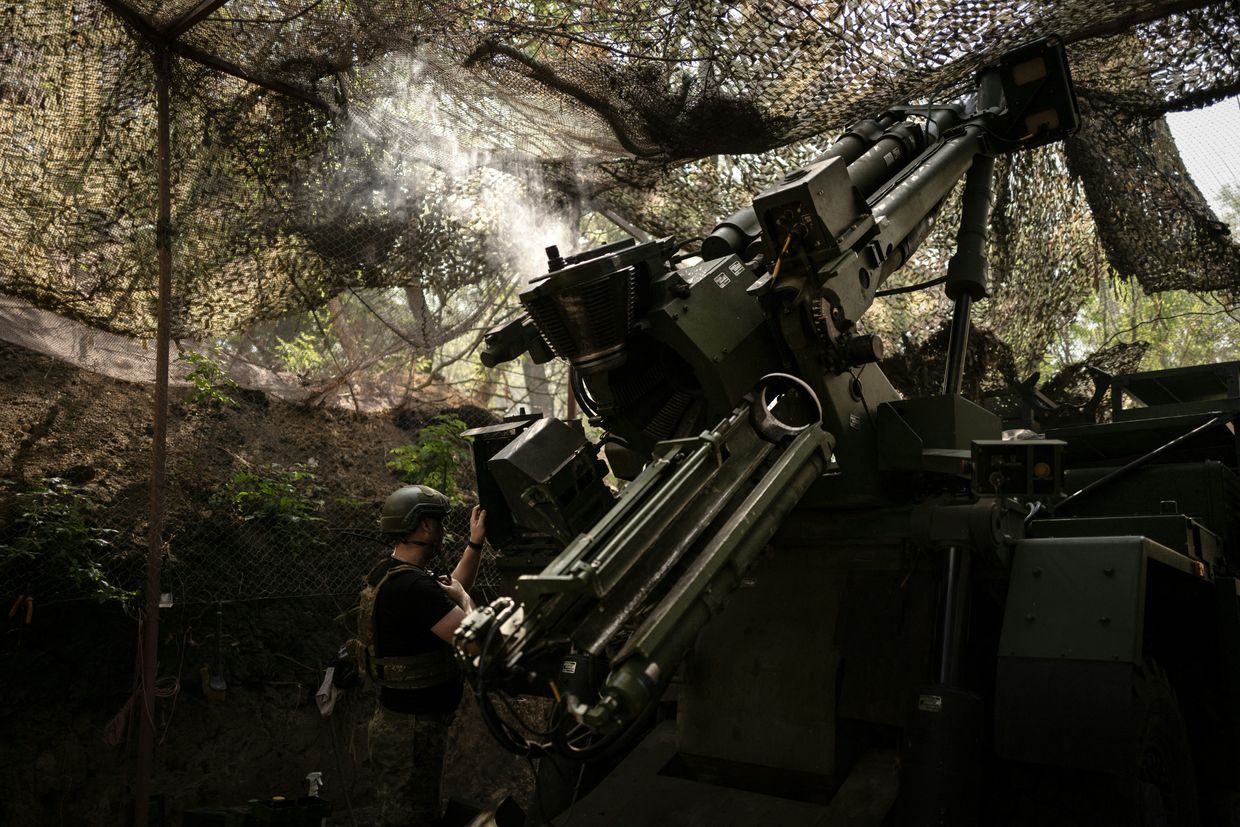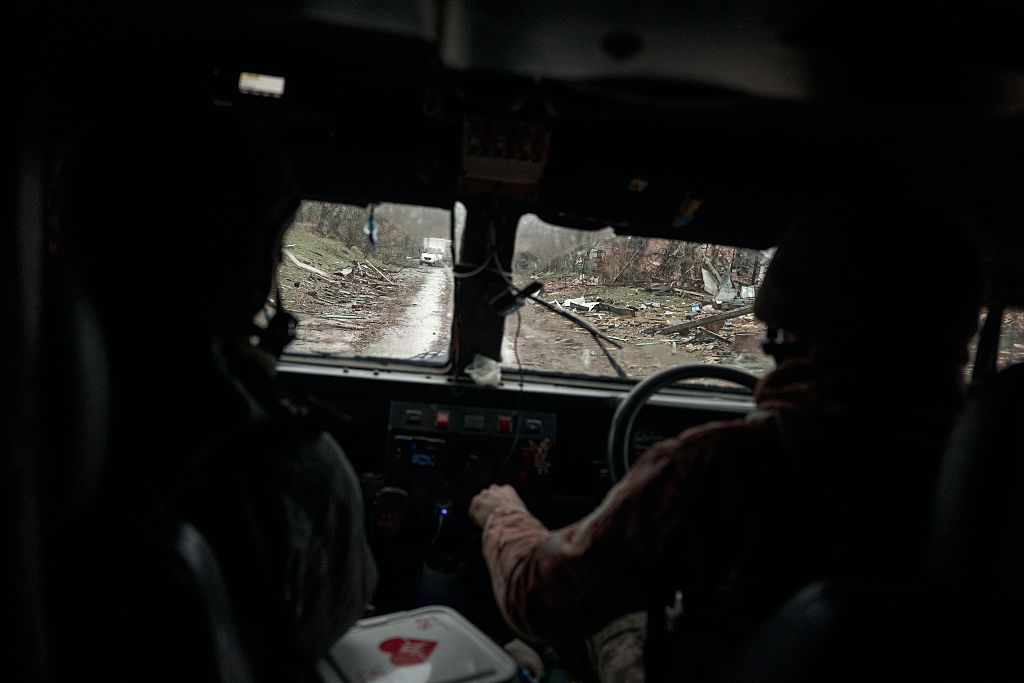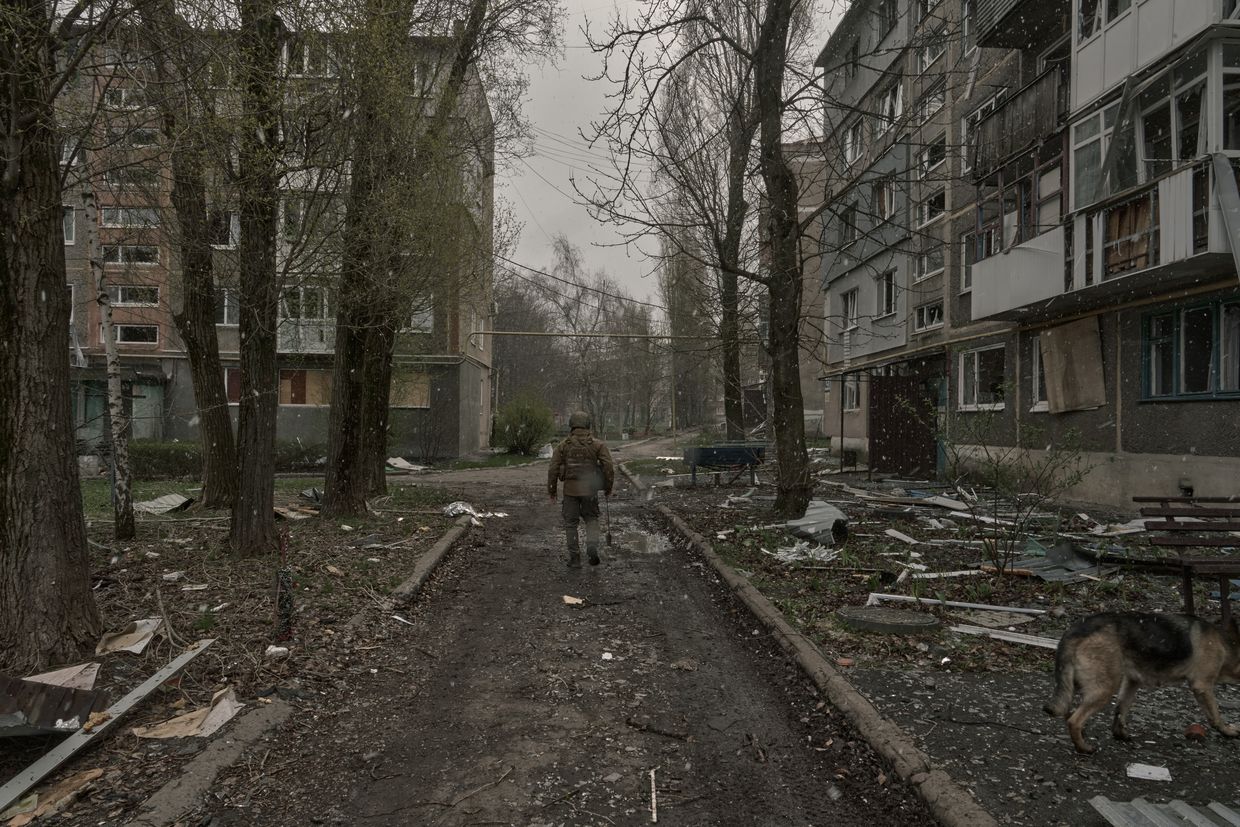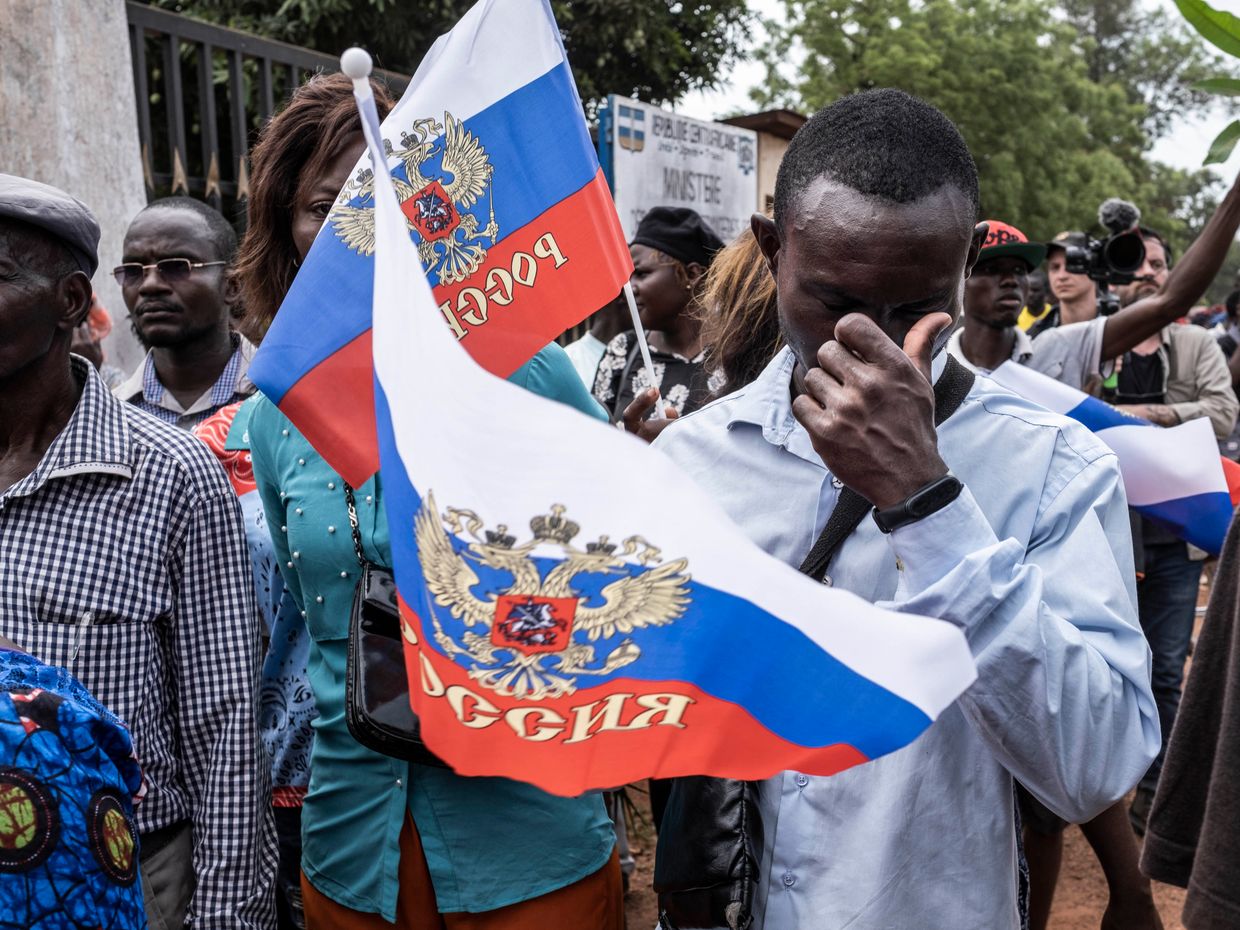VELYKA NOVOSILKA – Lyubov Andreeva, a retired builder, helped create the small town of Velyka Novosilka with her own hands.
“All that there is in Novosilka, my hands were there,” the 73-year-old recollected, sitting in one of the town’s underground shelter-communes. “We had a stonemason, a plasterer, a painter, a tiler, all the specializations. We built everything.”
When the Russians came, she was forced to watch her entire life’s work destroyed in front of her eyes.
“How I cried,” she said. “Why do this? Why destroy the houses?”
Today, Velyka Novosilka has been reduced to a series of ruined and damaged buildings, still under frequent shelling. Ukrainian troops stationed in the area said that the Russian forces are lurking just three kilometers away.
A soldier of the 1st Tank Brigade with the callsign Shaman said that the Russians have been trying to smash their way through the area since he got there in October. The Russians continually bombard the town with artillery, mortars and, occasionally, tanks. While they’ve failed to advance, they succeeded at turning the place into a ghost town.
Before the war, the town had a population of about 5,000 people. Now, only about 350 remain, many of them hiding underground. Some civilians trickled together into two of the town’s larger basements — 22 people in one, 39 in another. All of them are above the age of 40, as most younger people either left last year or were killed outright, residents say.
"They killed everyone. They killed everyone, everyone young," said Andreeva. "People would be eating, a shell would come through the window and a family is gone."
Most people were buried in their gardens, to someday be exhumed and reburied when the war ends. Waiting for the war to end is the main pastime of every civilian in Velyka Novosilka.
Daily life
The basement communes are cold and dark, concrete walls lined with beds. To stay safe from Russian shells, the locals have had to sacrifice fresh air, sunlight and what little mobile signal remains in these parts. On most days, when there’s shelling, they don’t go out at all.
A typical day starts just after 5 a.m. Able-bodied residents get the potbelly stove going, warm some tea and bring it to those who can’t walk well. For lunch, they cook hot meals for everyone in the makeshift communal kitchens. In the evening, people generally eat their own food, such as canned goods, said Iryna Babkina, the head of the larger shelter and former piano teacher in a music school.
That day, a resident in Babkina's shelter was frying up some pirizhky filled with cooked liver and mashed potatoes, passing them out to the residents and visitors alike. The crust looked perfectly golden-brown even in the gloom of the basement, lit mainly with mobile phones.
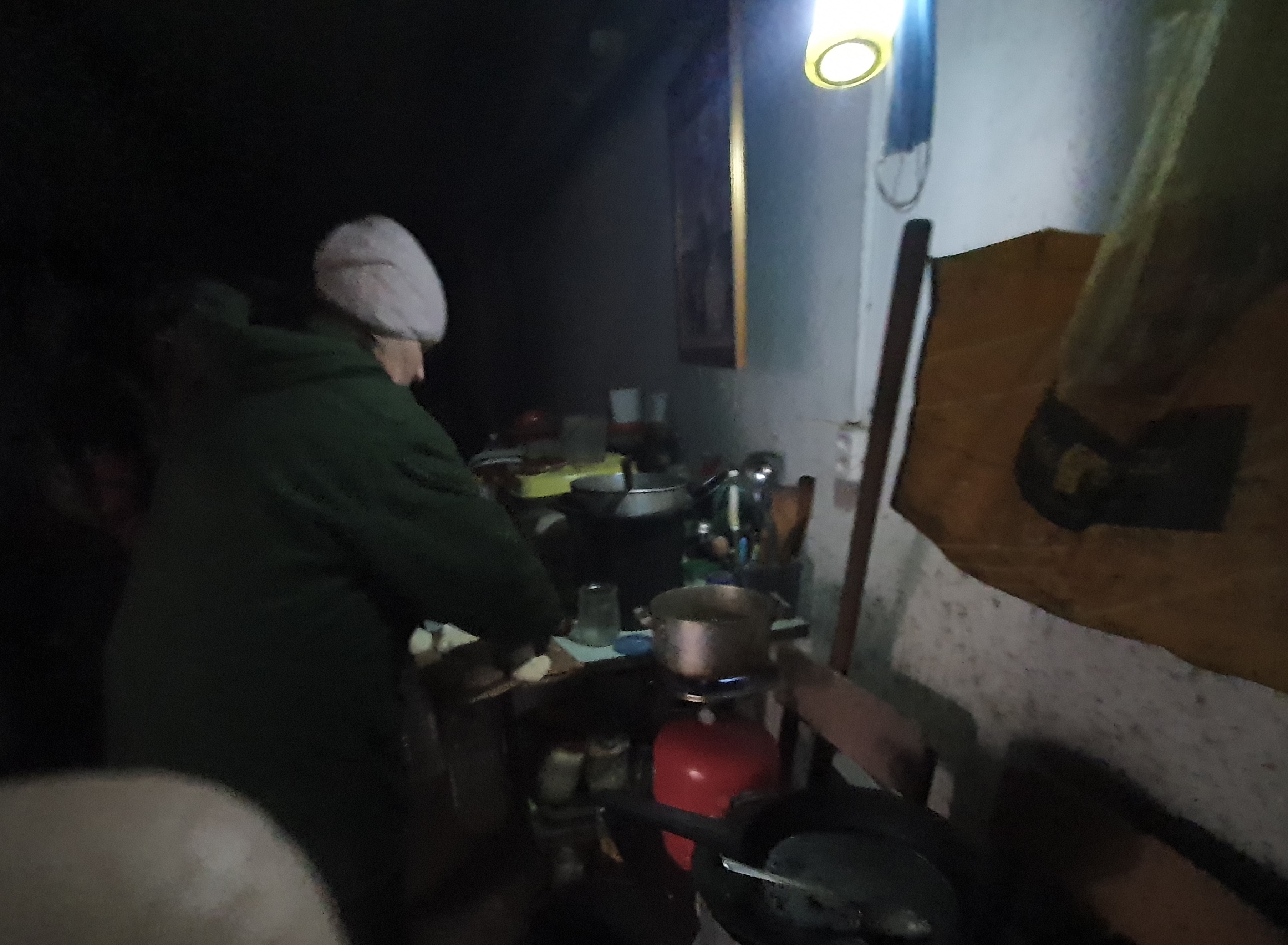
For entertainment, Babkina says they read books, knit, listen to the radio or just hang out, talking.
Occasionally, some have to go out to collect firewood, pick up humanitarian aid, try to call their loved ones on the phone or just breathe freely for a few minutes. Some may briefly pop over to their homes if they’re still standing. Each outing is a risk.
“They understand that every time they go outside, it can all end for them,” said Babkina.
She wasn’t speaking hypothetically. Just days ago, a 75-year-old man from Babkina’s basement stepped outside for a few minutes and a Russian shell fragment permanently ripped him away from his wife and two children.
Andreeva, who was once his neighbor, remembered him as a quiet, decent man. His death was another blow for the residents, who have for many months sat in the dark, under a proverbial sword of Damocles hanging in the sky.
"We try to keep each other's spirits up, we try to support each other," said Babkina. "But there are moments when people break down because of the situation in the basement. We try not to lose heart, because if you lose heart, that's it."
Still, the conditions get to some people eventually.
"Everyone's sick of it. People's nerves can't bear it," said Serhiy, a retired firefighter and lyceum lecturer, who heads the other shelter. "Yesterday, a woman was evacuated because she couldn't take it anymore. I had the same thing happen last Sunday."
Serhiy arranges for military chaplains to visit about once a month to help people psychologically.
Nowhere to go
If living here is so difficult and dangerous, why do people stay?
Those who remain have nowhere to go and no money to try, the residents explain. Many of them get very little in pension or haven’t yet reached pension age. Without jobs, there are no other streams of income to rely on. Many have health problems.
"Where would I go at this age, with my health?" said Andreeva. "I fell against a crate and hurt my tailbone. I had to be in the hospital for six months. Now I can't lift heavy things. Disabled. Did anyone pay me any compensation? Where am I going to go?" She spread her arms. "I'm old. Whatever happens, happens. At least my grandchildren are safe."
The other reason people refuse to go is because Velyka Novosilka is their home and they can’t imagine leaving it. Some still hope that they’ll be able to outwait the war, somehow patch up their ruined homes and struggle on with their lives.
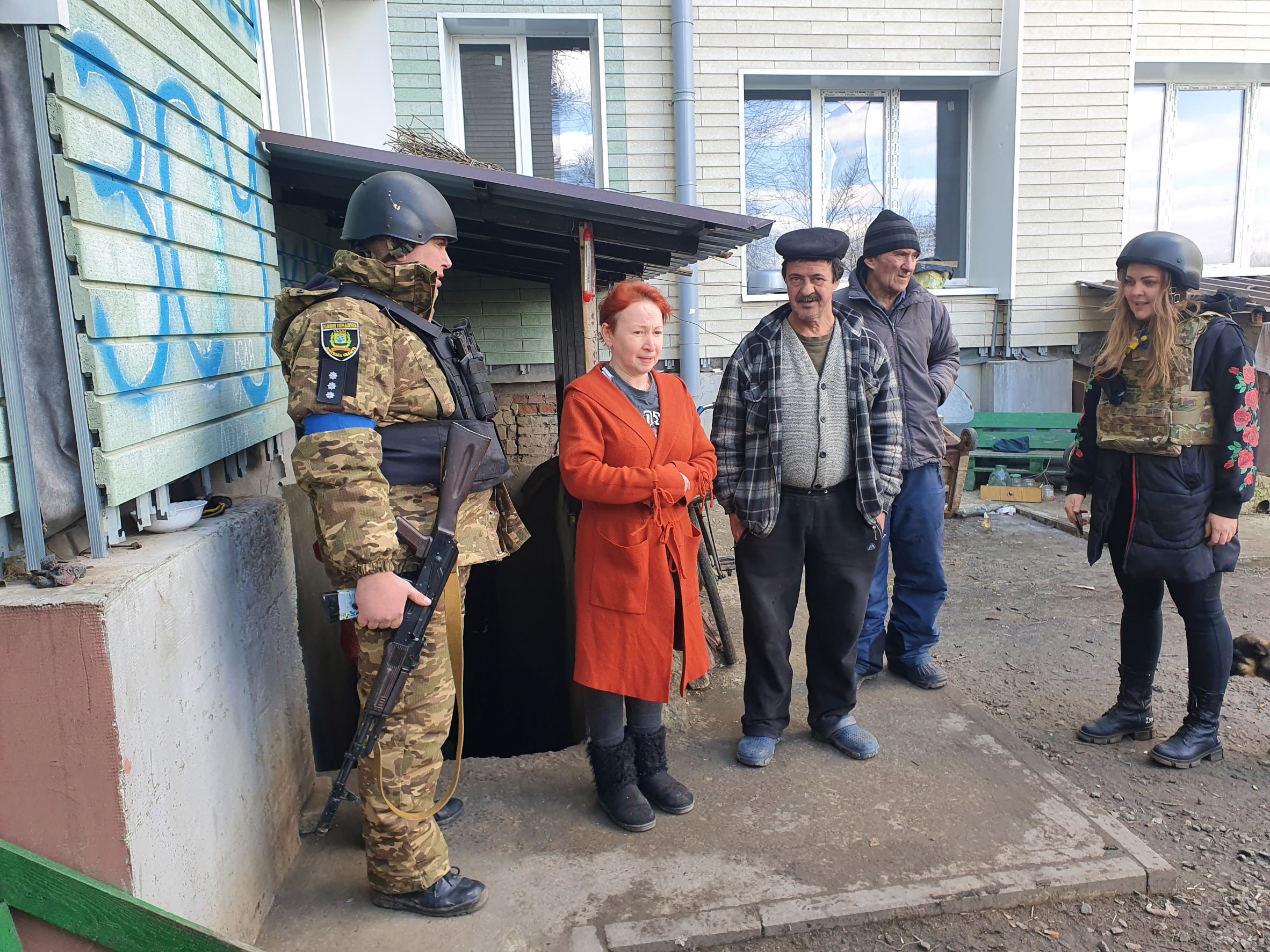
“There are those that lived their lives here and they don’t want to abandon it,” said Serhiy, who declined to provide his last name. In some parts of Ukraine, Russians have been known to target volunteer and civilian leaders.
Some are paralyzed with indecision, like 65-year-old Tetiana, who lives in Serhiy’s shelter. Since the war began, she’s lost contact with her husband, a Jordanian national, and she doesn’t know how to find him. Her two daughters live in occupied Donetsk — they last spoke on New Year’s Eve. Tetiana, who wants to be with her family, doesn’t know what to do.
Serhiy and Babkina, meanwhile, stay out of duty. As community heads, they are responsible for maintaining order, staying in touch with volunteers and making sure their people get everything they need through humanitarian aid or buying it with their own money.
Supported by volunteers
The shelter residents’ reasons for staying don’t sound convincing to police special forces officer Oleksandr Marteniuk, who drives in and out of front-line villages in an armored van, delivering humanitarian aid and evacuating the willing. To him, people’s safety is paramount.
“If it were up to me, I’d get all of them out,” he said, during a delivery mission to Velyka Novosilka on a particularly quiet day in early March. “Do they really think that we aren’t going to help them (settle into a new location?)”
The stylized white wing insignia Marteniuk wears on his sleeve marks him as a member of White Angel, a group of rescue squads operating across the Donbas’s front-line towns. The name came from a white ambulance that was used to rescue people in the embattled village of Marynivka, which the locals began to call the white angel.
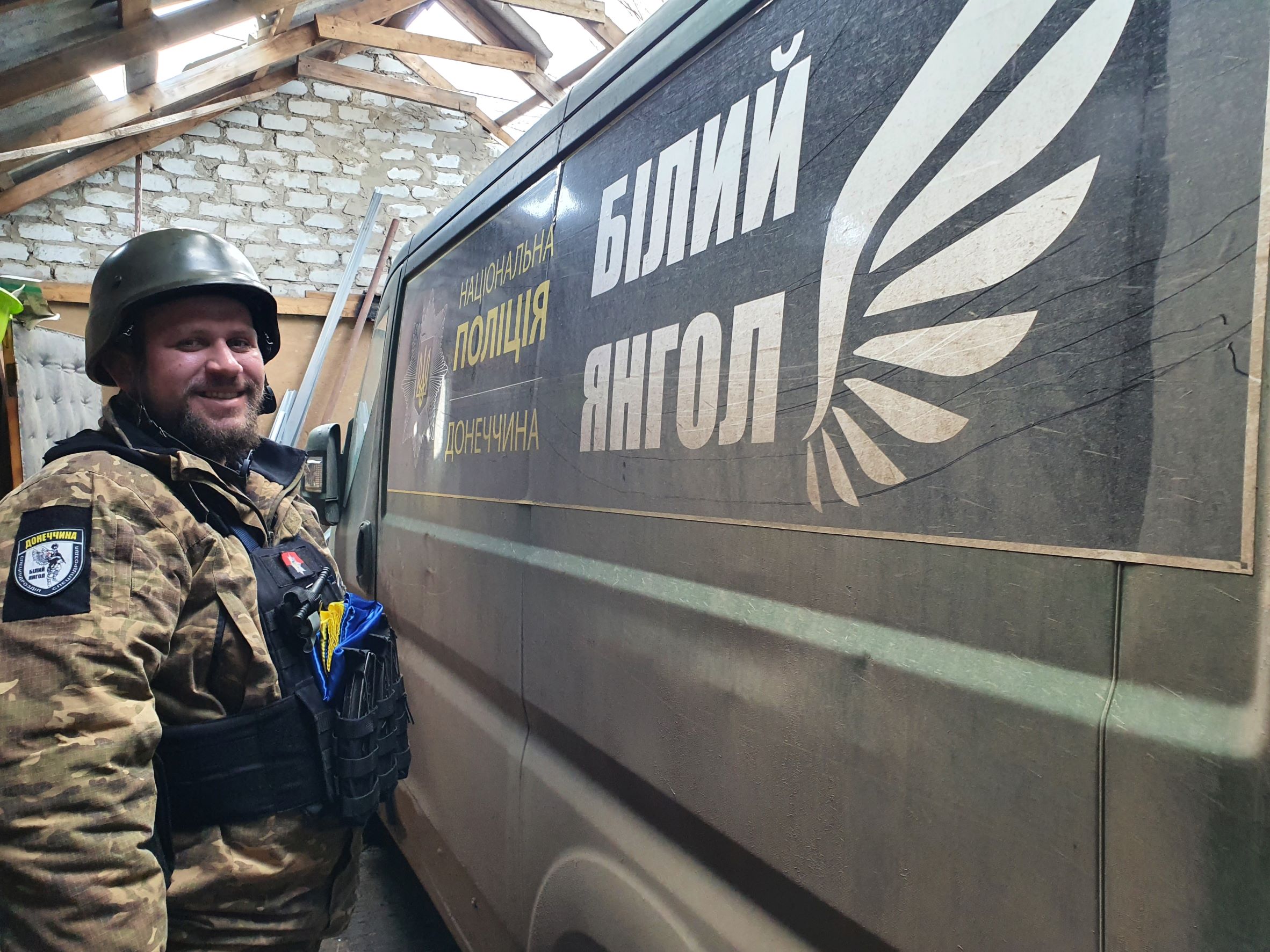
The name stuck and now, multiple squads of ‘angels,’ many of them cops, support or rescue civilians in the eastern war zone. Marteniuk’s team works with volunteers in the nearby village of Komar to deliver critical goods to Velyka Novosilka on a regular basis.
The road there is pitted and treacherous and shells are liable to come at any moment. The armored glass windshield of their vehicle is covered in cracks from absorbing the shockwave of a nearby explosion. Its doors are dented with bullet marks.
And yet, while the holdouts remain, volunteers will keep making the perilous trips. The people need food and fuel, as well as the medicine to survive the cold, damp darkness of their basement shelters.
If there is a silver lining, it’s that Russian shelling has decreased since the fall of 2022, as Russian forces struggle with ammunition and worn-out barrels for their artillery, Shaman said. According to him, Ukrainian forces, using the latest in Western technology like M777 howitzers and HIMARS launchers, did a lot of damage to their enemies in the area.
“I think that there will be an offensive from our side,” Shaman said. “Ukraine will never surrender.”
____________________
Note from the author:
Hi, this is Igor Kossov, I hope you enjoyed reading my article.
I consider it a privilege to keep you informed about one of this century's greatest tragedies, Russia's ongoing invasion of Ukraine. With the help of my colleagues, I will continue to bring you in-depth insights into Ukraine's war effort, its international impacts, and the economic, social, and human cost of this war. But I cannot do it without your help. To support independent Ukrainian journalists, please consider becoming our patron. Thank you very much.




